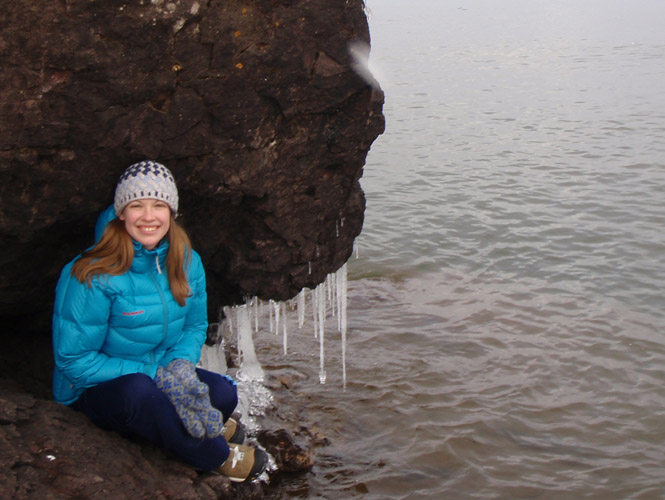by John Gagnon, promotional writer
There is an old story about soft-spoken, reticent Finns.
A Swede and a Finn stand at the bar, drinks in hand.
“Cheers,” says the Swede.
“Did we come to talk or drink?” says the Finn.
Gary Kaunonen, a graduate student in the rhetoric and technical communication program, is of Finnish heritage but definitely doesn’t fit that proverbial mold. Indeed, he is effusive–in speech and writing–about a subject that is dear to his heart and mind: Finnish immigrant labor and political activity in the Keweenaw.
A native of Minnesota, Kaunonen has written a book, “Challenge Accepted: A Finnish Immigrant Response to Industrial America in Michigan’s Copper Country,” which was just published by Michigan State University Press. The book is his master’s thesis in Tech’s industrial archaeology program.
The Michigan Tech Archives will host a presentation and book signing by Kaunonen at 4 p.m., Tuesday, August 17, in the East Reading Room of the Van Pelt and Opie Library.
Kaunonen calls the book “a honed-in look” at Finnish immigrants and their living and working conditions–and often radical union activities–in the years 1904-14. The backdrop of this history, Kaunonen says, was a “lopsided distribution of prosperity” that led to “proletarian consciousness” and a “struggle for the betterment of lives.” All of it was “a powder keg” that exploded into violence on the copper range in the 1913-14 Copper Strike and the infamous Italian Hall disaster, in both of which Finns had “a huge and significant role.”
“The upstart Finnish immigrants,” he writes, “often stumbled and stammered in awkward directions, but for a time that took a back seat to working class solidarity. They seldom wavered in their bold attempt to shape their lives into what they perceived to be a more just and equal existence.”
These immigrants had marked reputations. “Finns were respected workers,” he says, “but they were also suspected agitators. They had a big impact on labor relations in this area. They resisted company dictates and mandates. They challenged the inequalities of the traditional mining and industrial society.”
His research led him to the archives at both Michigan Tech and Finlandia University, where he sought material culture–what he calls the “hard evidence” of historic circumstances. He notes, for instance, that Hancock’s leftist newspaper, Tyomies (The Worker), moved to bigger and bigger buildings and bought bigger printing presses to accommodate a burgeoning readership and a growing business. Tyomies would become a communist organ.
Kaunonen can tell the story of immigrant Finns without championing any specific cause. “I’m not casting aspersions on the mining,” he says. “But you had these huge mining companies and the vast amount of wealth and inequality they created—and then you had this little ethnic group trying to make a place for themselves. I have a soft spot in my heart for the underdog. Not that I wholly agree with everything they did, but they should certainly have a place at the table, so to speak, in telling their story.”
He went to college just to play baseball. He quit because of injuries, poked around, and worked in factories. Then the drifter became a father. “I decided I was wasting my life. I thought, well, my daughter is here, and how can I lecture her on working hard and using your gifts if I don’t do that myself. So I decided to go back to school.”
That proved to be a purposeful enterprise. He earned three bachelor’s degrees from Minnesota State University-Mankato, his IA master’s at Michigan Tech, and is now a PhD student here. Previously, he was an archivist at Finlandia. It’s been “a winding road” that has become a quest. He has now written two books on Finnish immigrants. An earlier one, “Finns in Michigan,” also was published by Michigan State University Press.
In his endeavors, Kaunonen is grateful for what he calls “a slew of good professors” in social sciences and now humanities. “They inspired me by what they did and currently do.”
As did his family.
“I write because I have an admiration for my parents and grandparents. All of them were members of the working class”—both grandfathers worked on the Minnesota iron range–“and I’m kind of honoring them and their contributions to American labor.”
Published in Tech Today.
